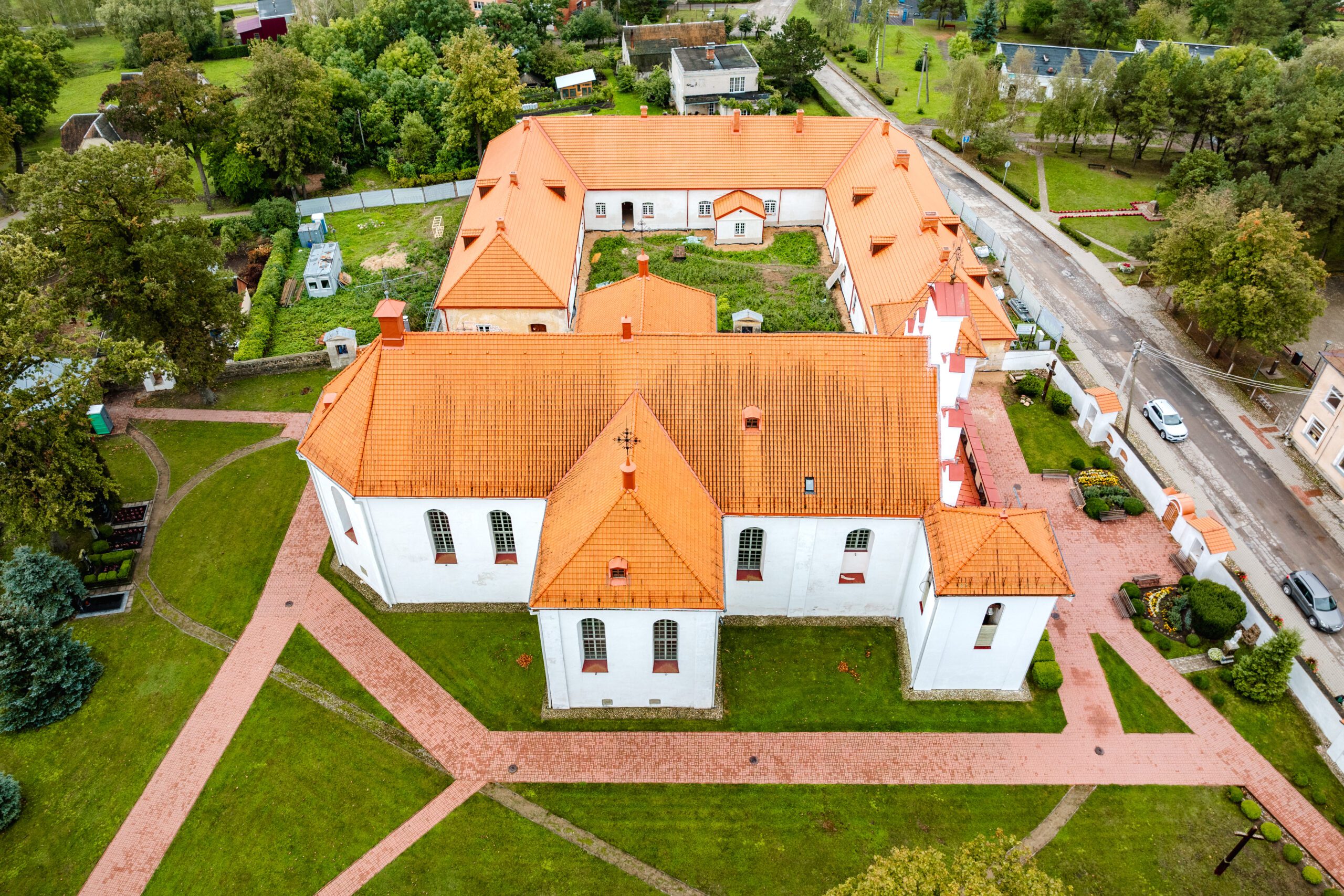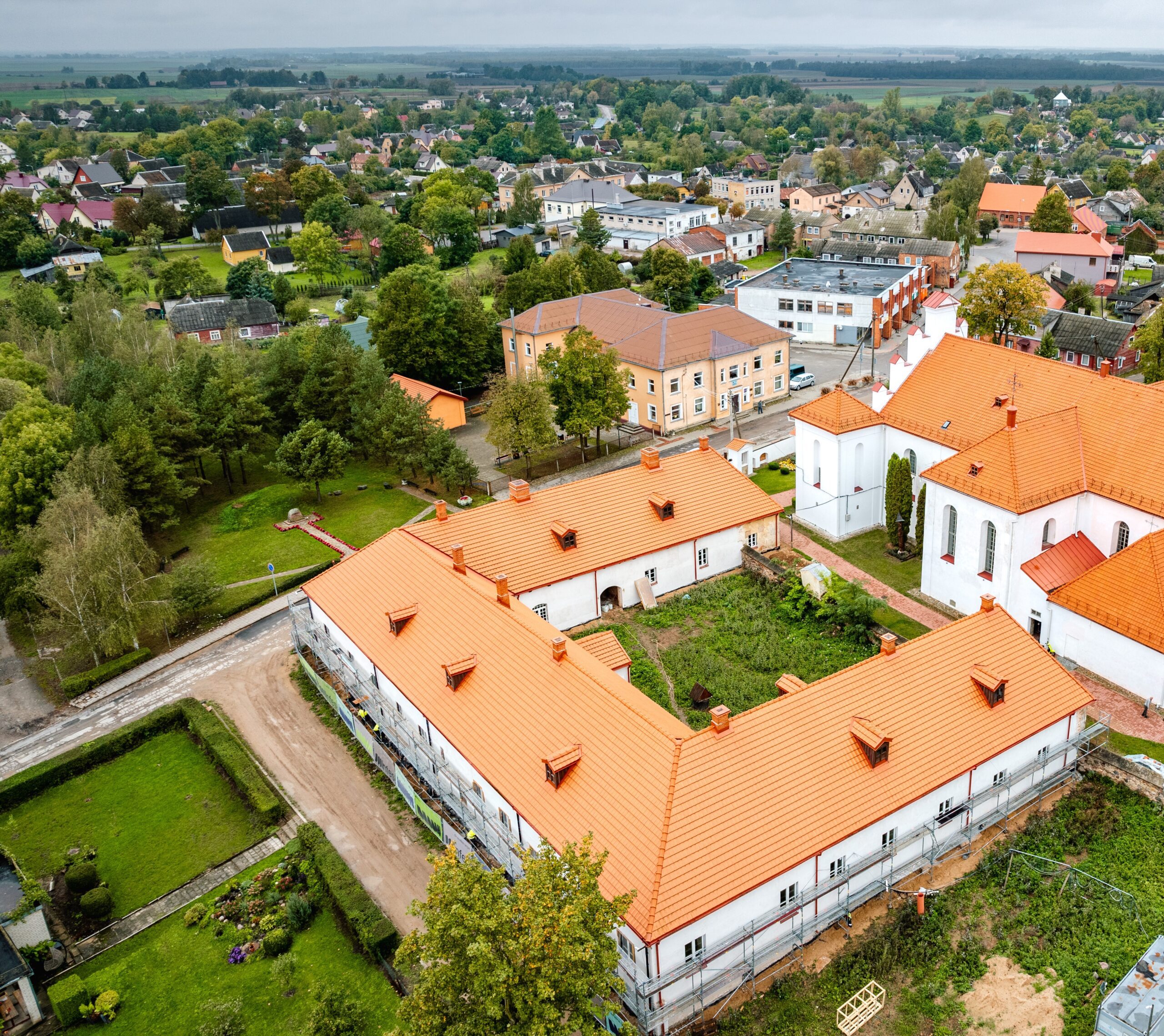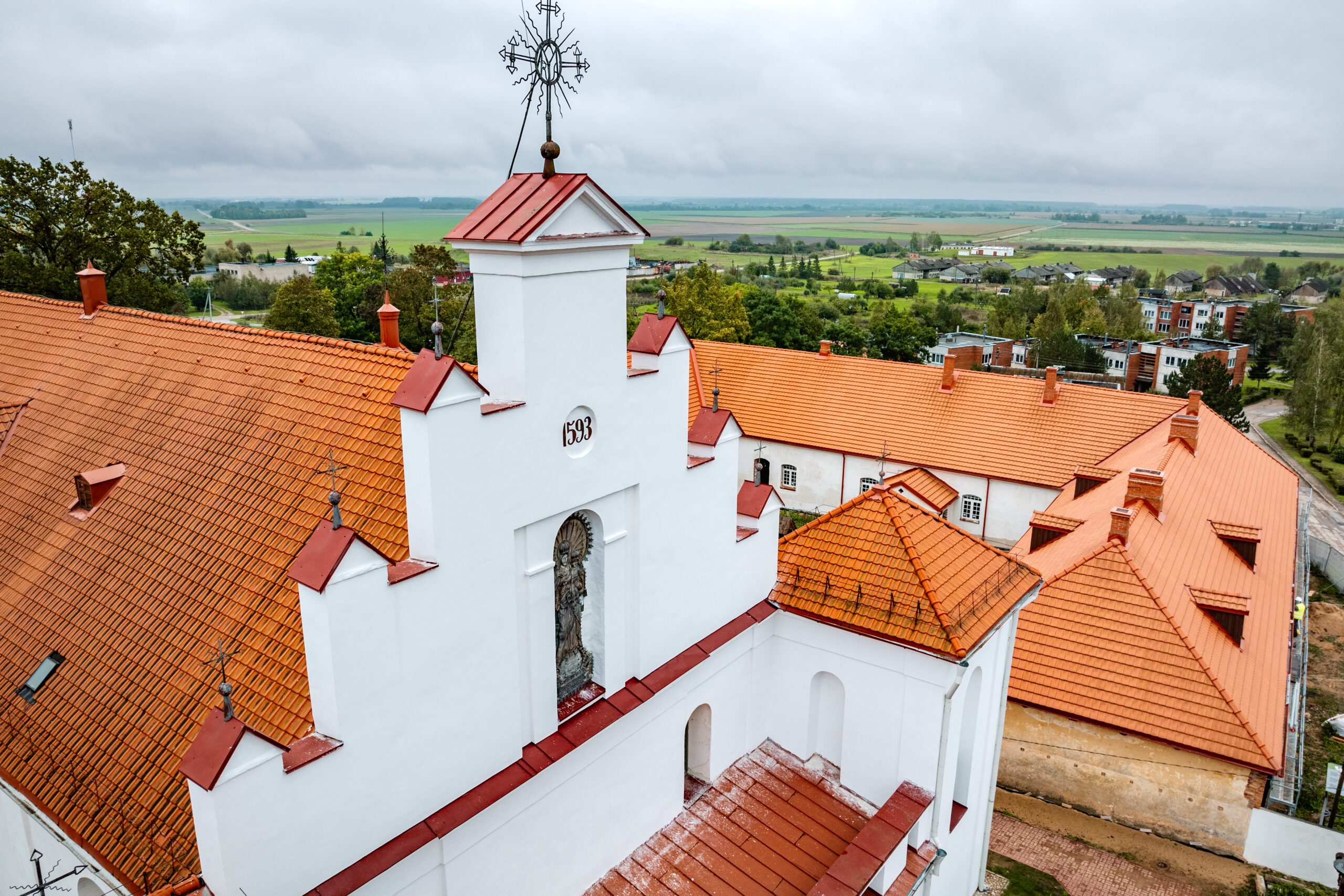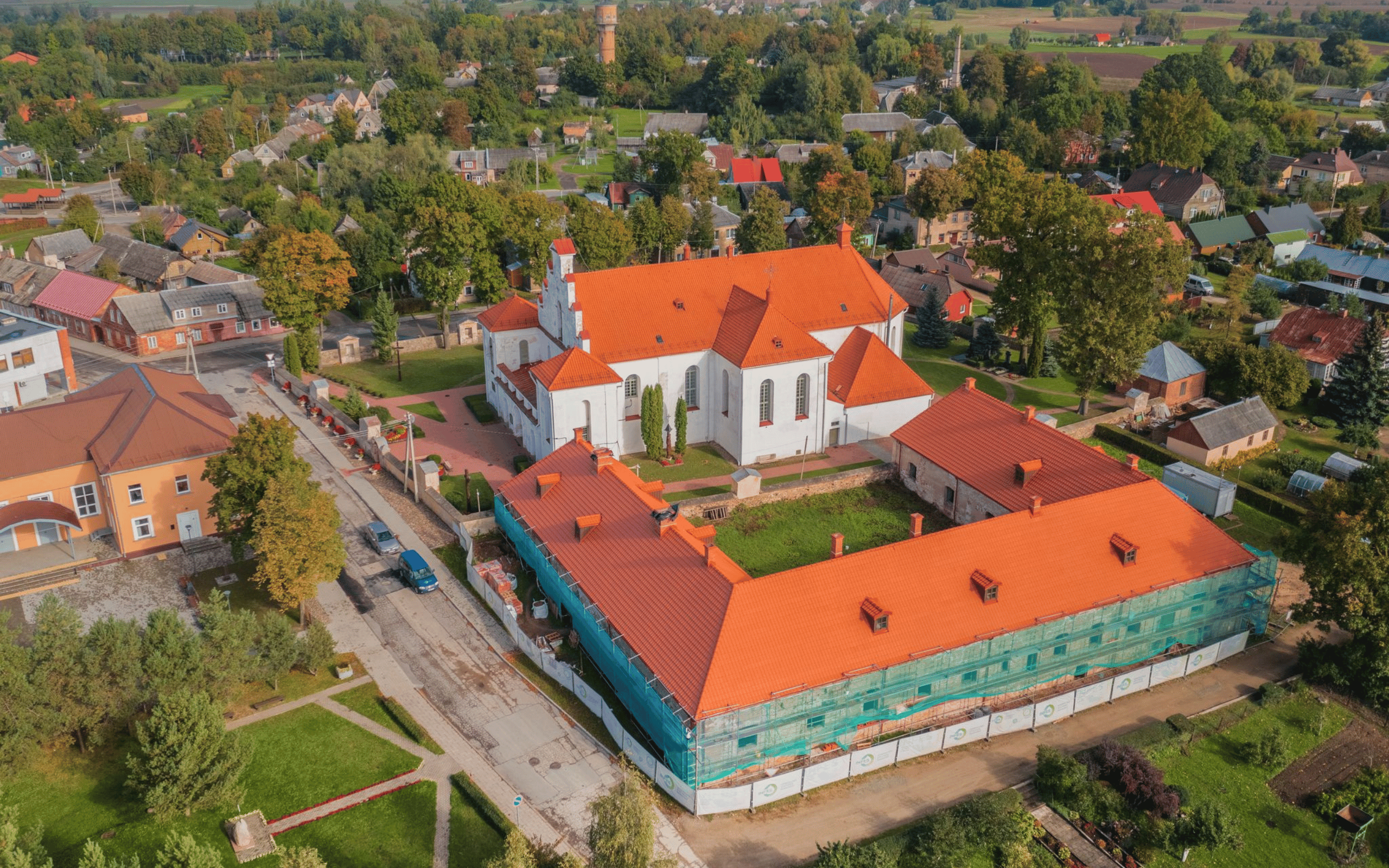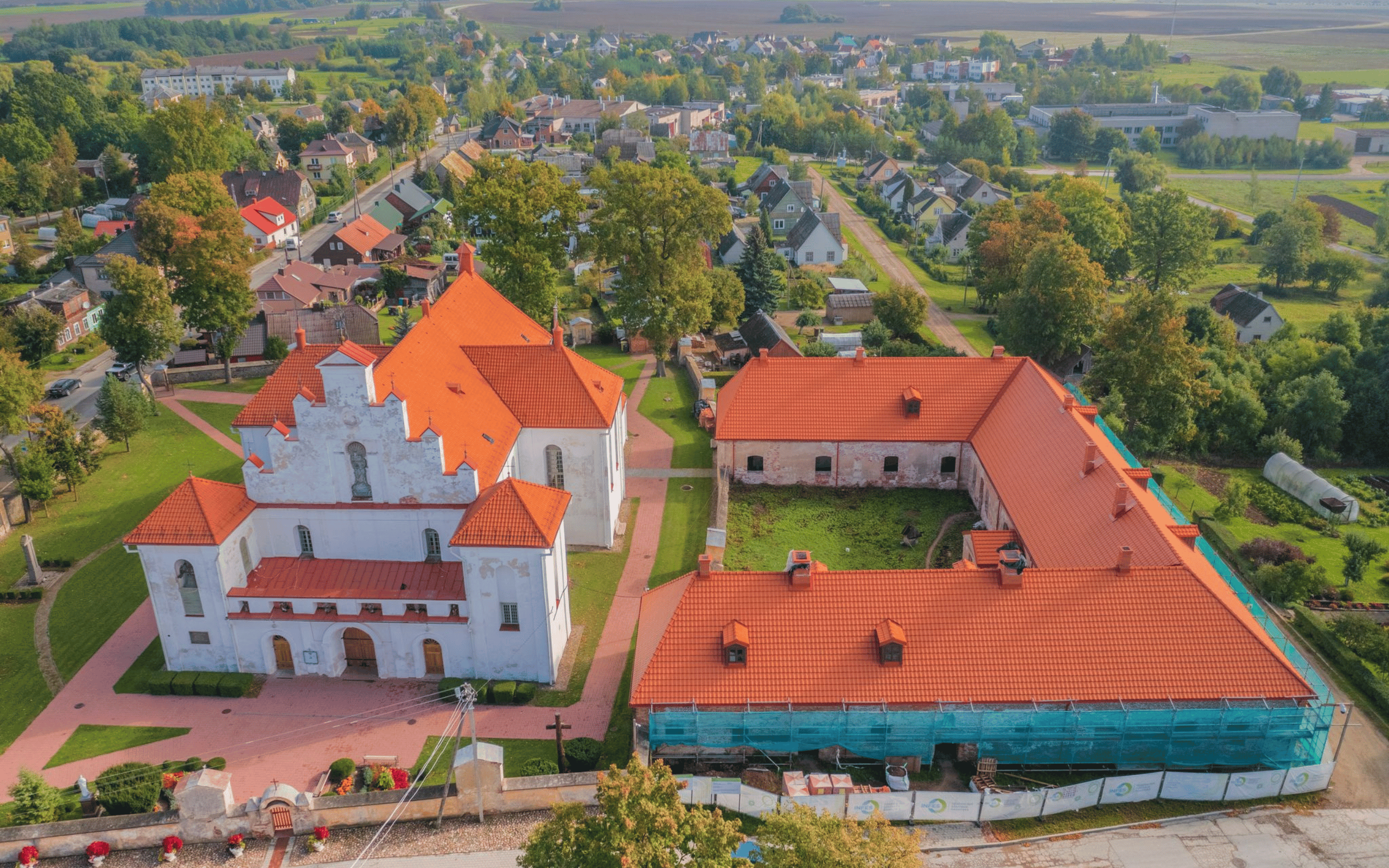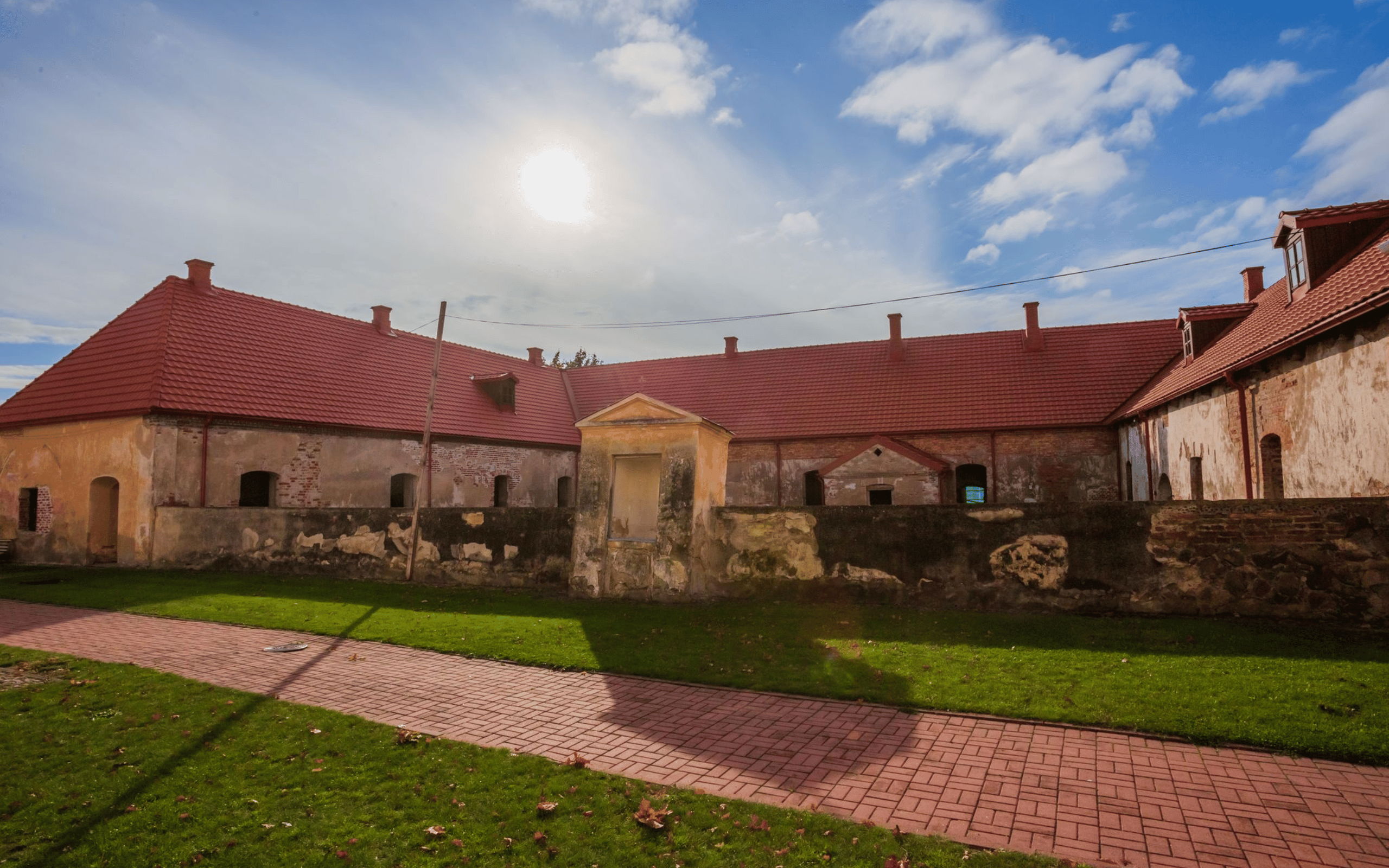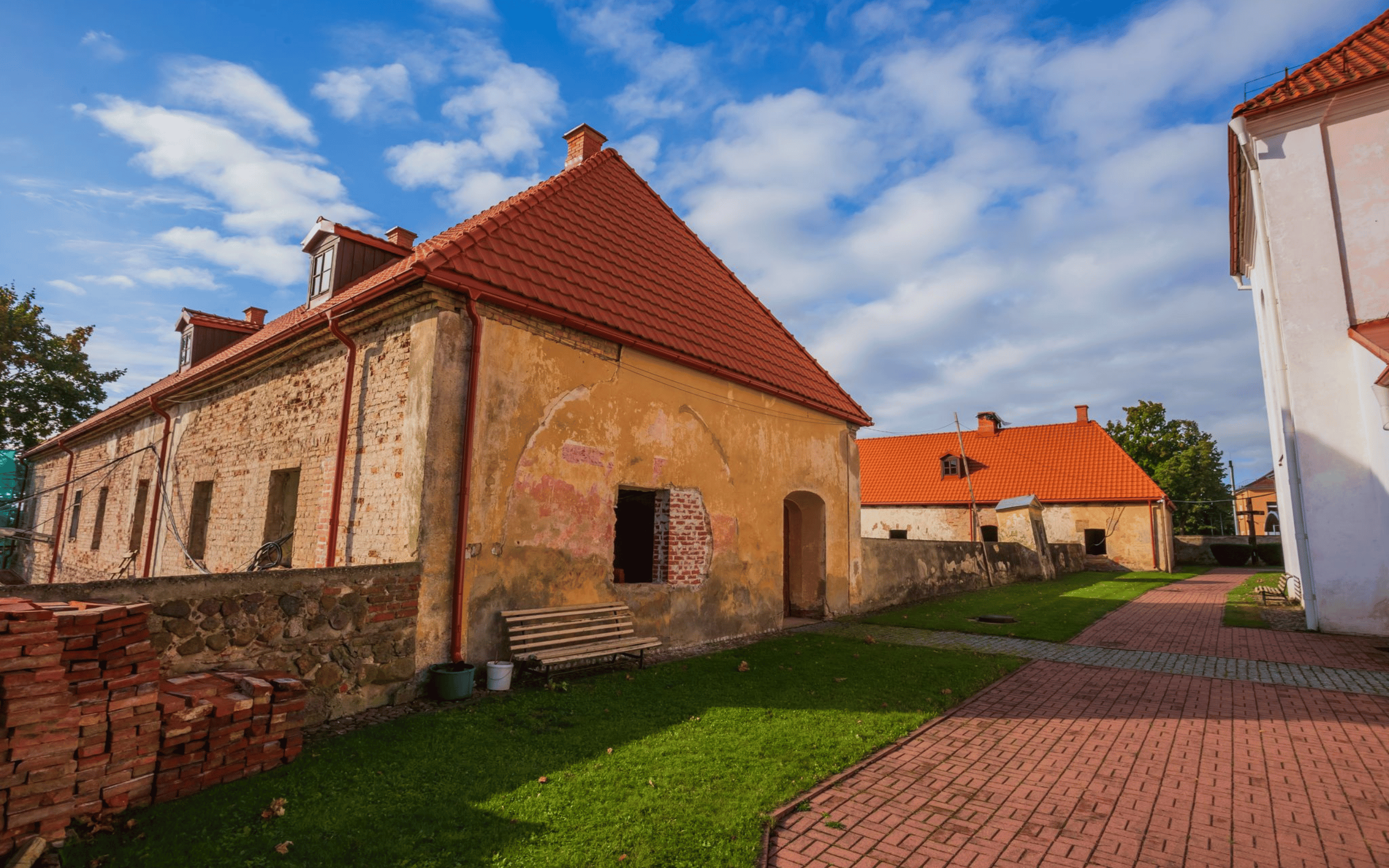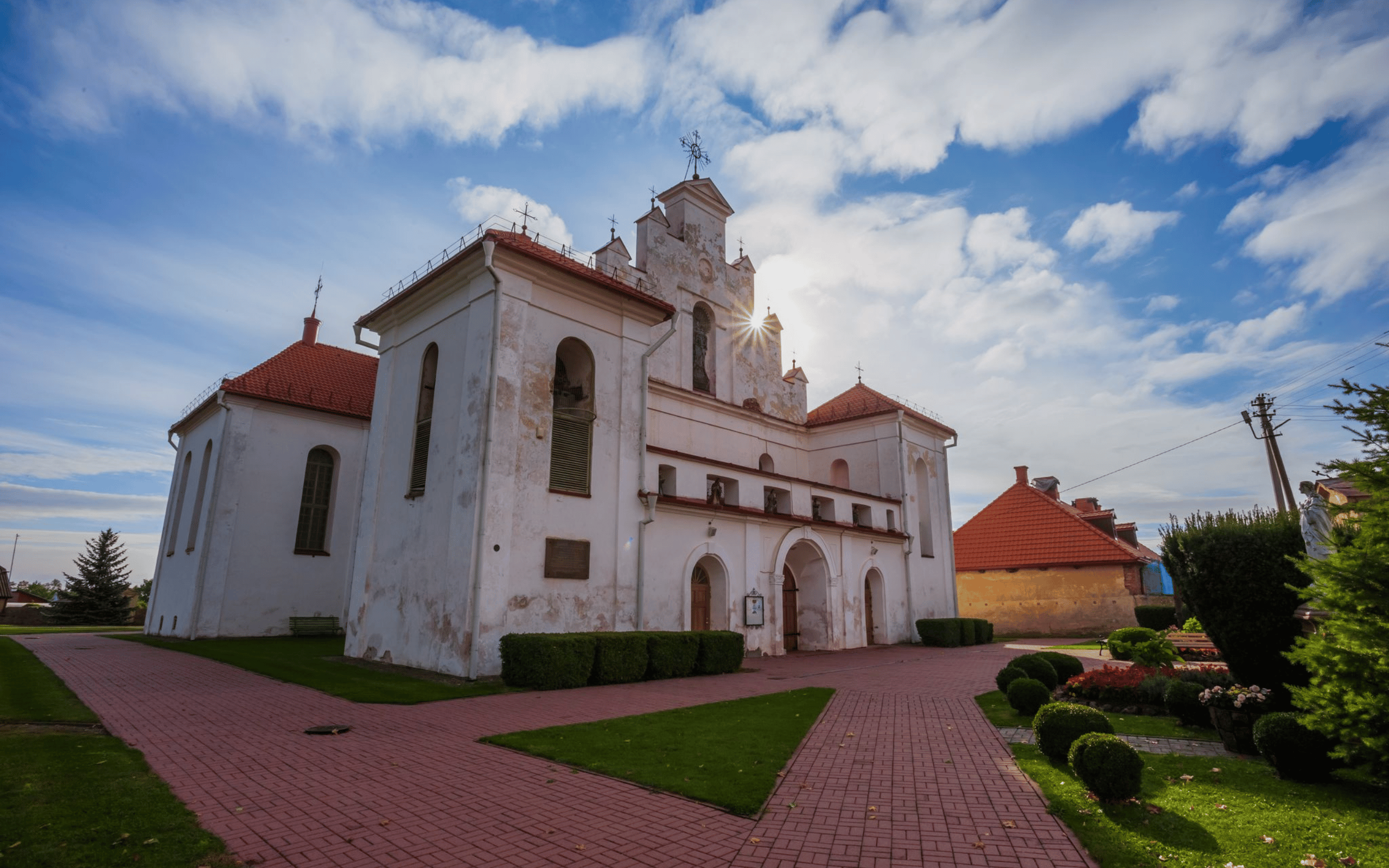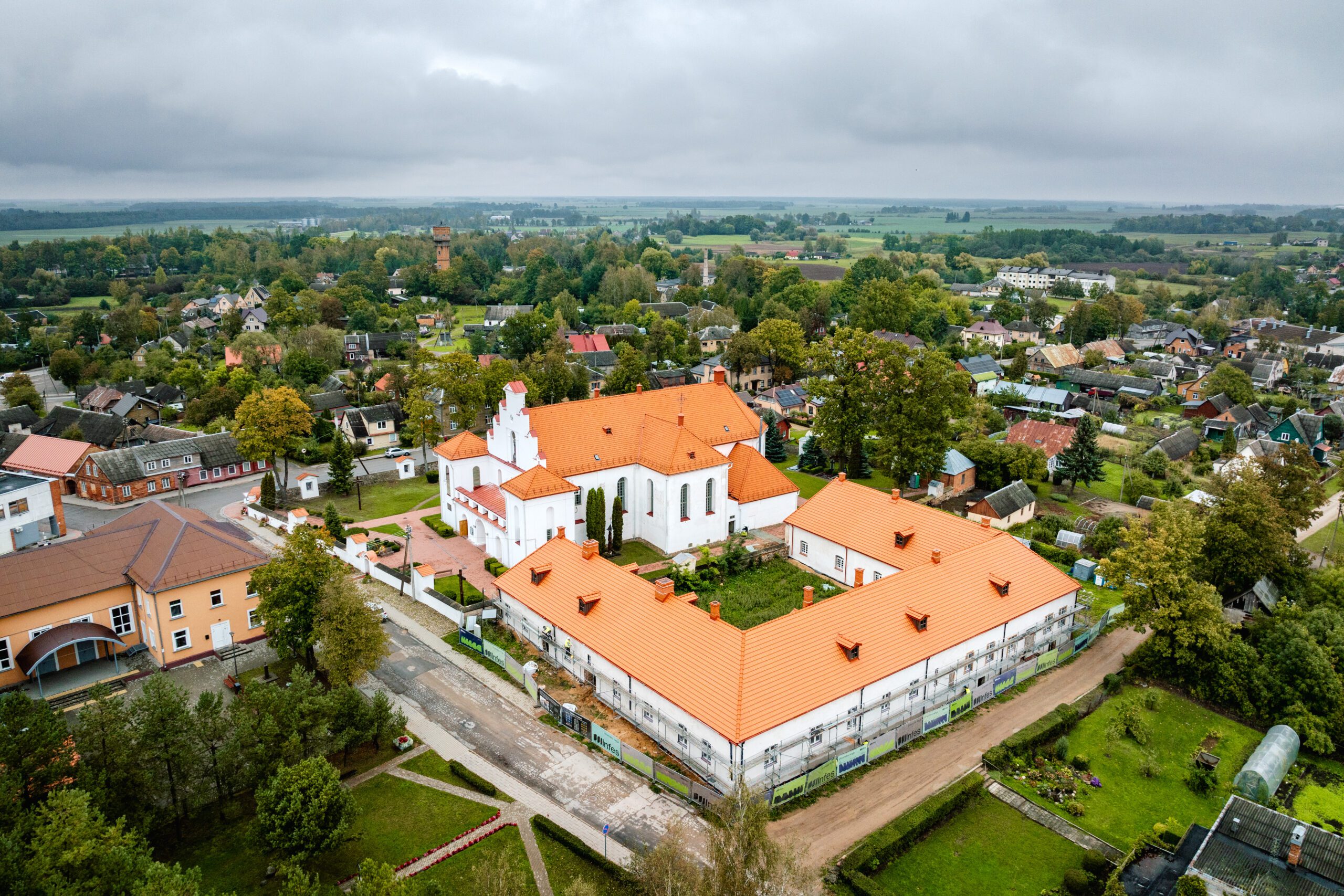
About the client
The Carmelites Monastery of Linkuva in Pakruojis District was built in 1689. However, after the wooden building burned down in a fire, the construction of the whole ensemble was not completed until 1773. The Carmelite monks, who lived in the monastery for 200 years, had a great influence on the town of Linkuva – they were involved in parish missions, tended to the Renaissance church, cared for the sick, supported the poor, worked in the parish school, and managed the library.
INFES work
Restoration, conservation, plastering, and painting of facades are being carried out New windows, doors, and engineering systems – water supply, sewage, heating, ventilation, and electrical network with internal wiring and communication systems – are being installed.
Inside the building, restoration work is being carried out on the interior brickwork, and the walls are being plastered and painted. Inside, the hearths are being restored by cleaning the soot from existing authentic masonry, which is then restored and conserved. The wooden porch, the wooden ceiling and floor, which have already deteriorated, are being restored, as well as the clay brick flooring in the corridor. The monastery courtyard, the churchyard fence, and the surrounding grounds are also being restored.
Significance of the project
The Linkuva Carmelites Monastery ensemble is an exceptional sanctuary in northern Lithuania, important both for the community and for travelers visiting the region. The historical artefacts discovered during the construction and renovation works will increase public interest and the buildings of the ensemble, which will be brought back to life, will make the monastery a regional attraction.
Results
After the restoration, the monastery ensemble will serve ecclesiastical, cultural, educational, and social purposes and, above all, will be adapted for tourism. The public will have an opportunity to learn about the history of the monastery and the artifacts it contains. The renovated monastery ensemble will also have the potential to become an attraction similar in its significance to the nearby Pakruojis Manor.


